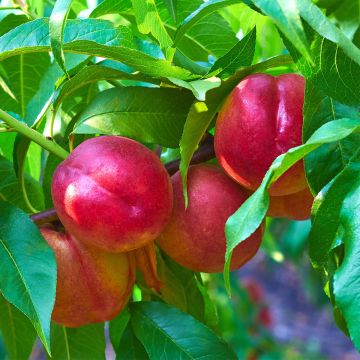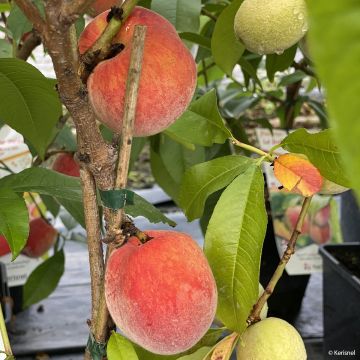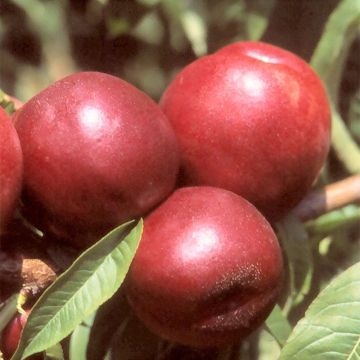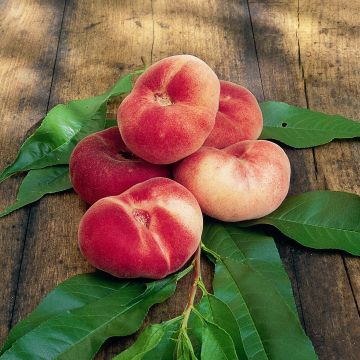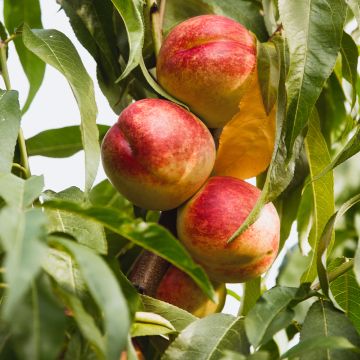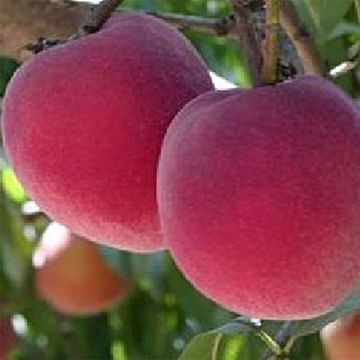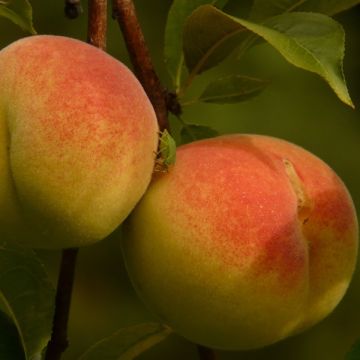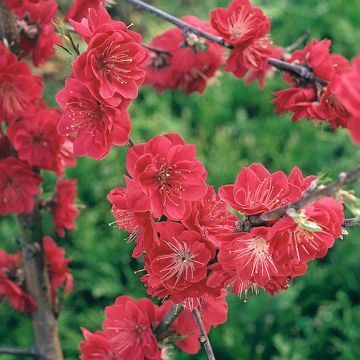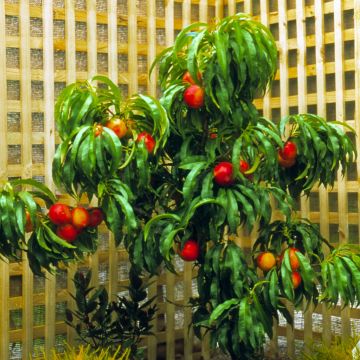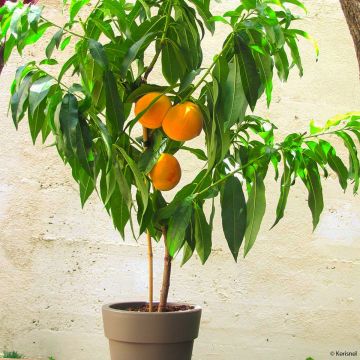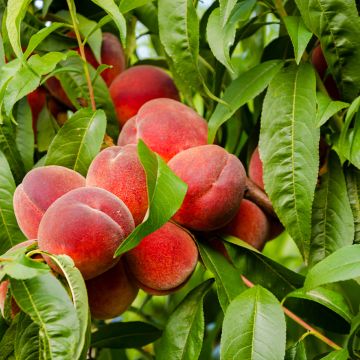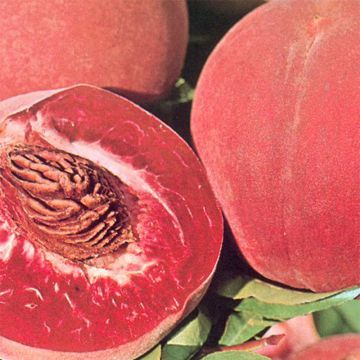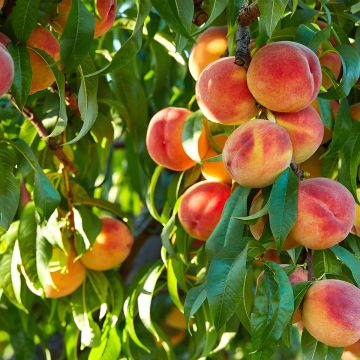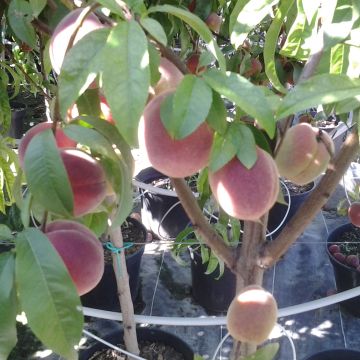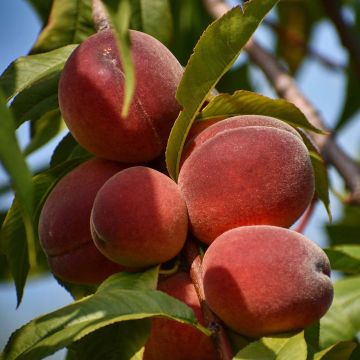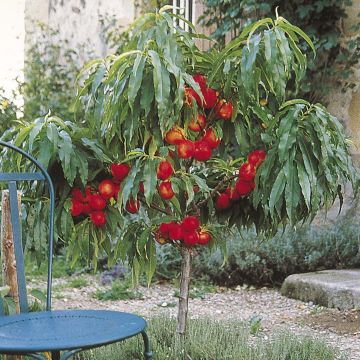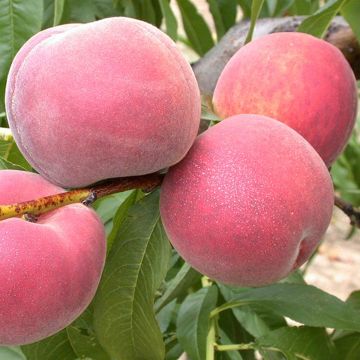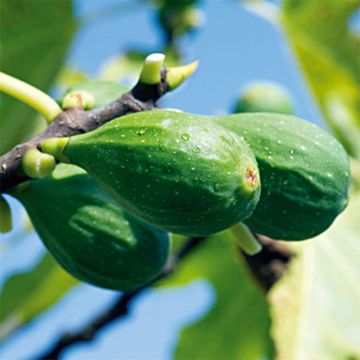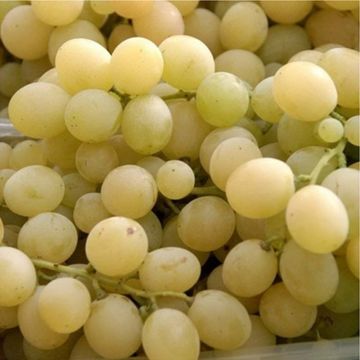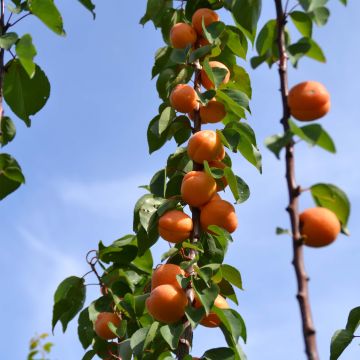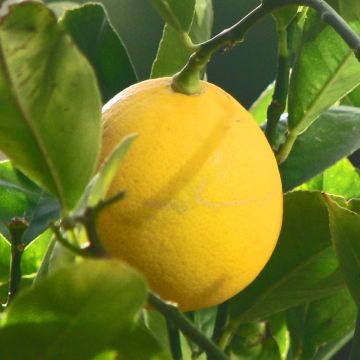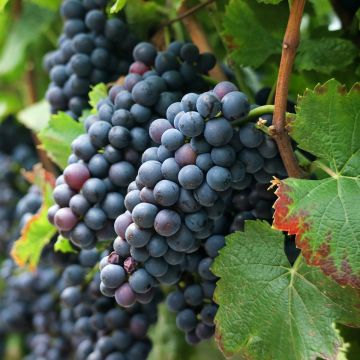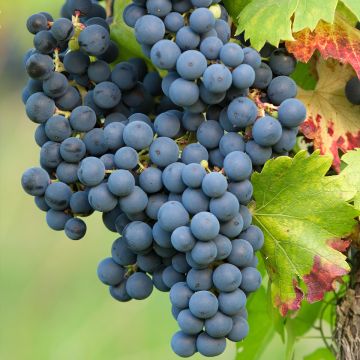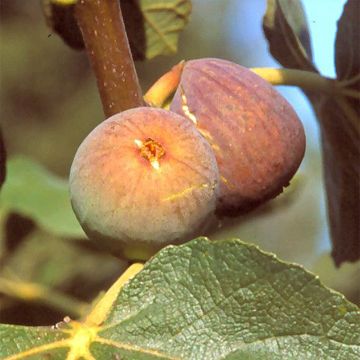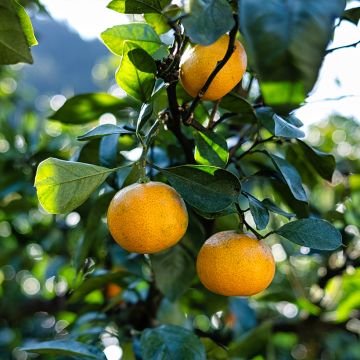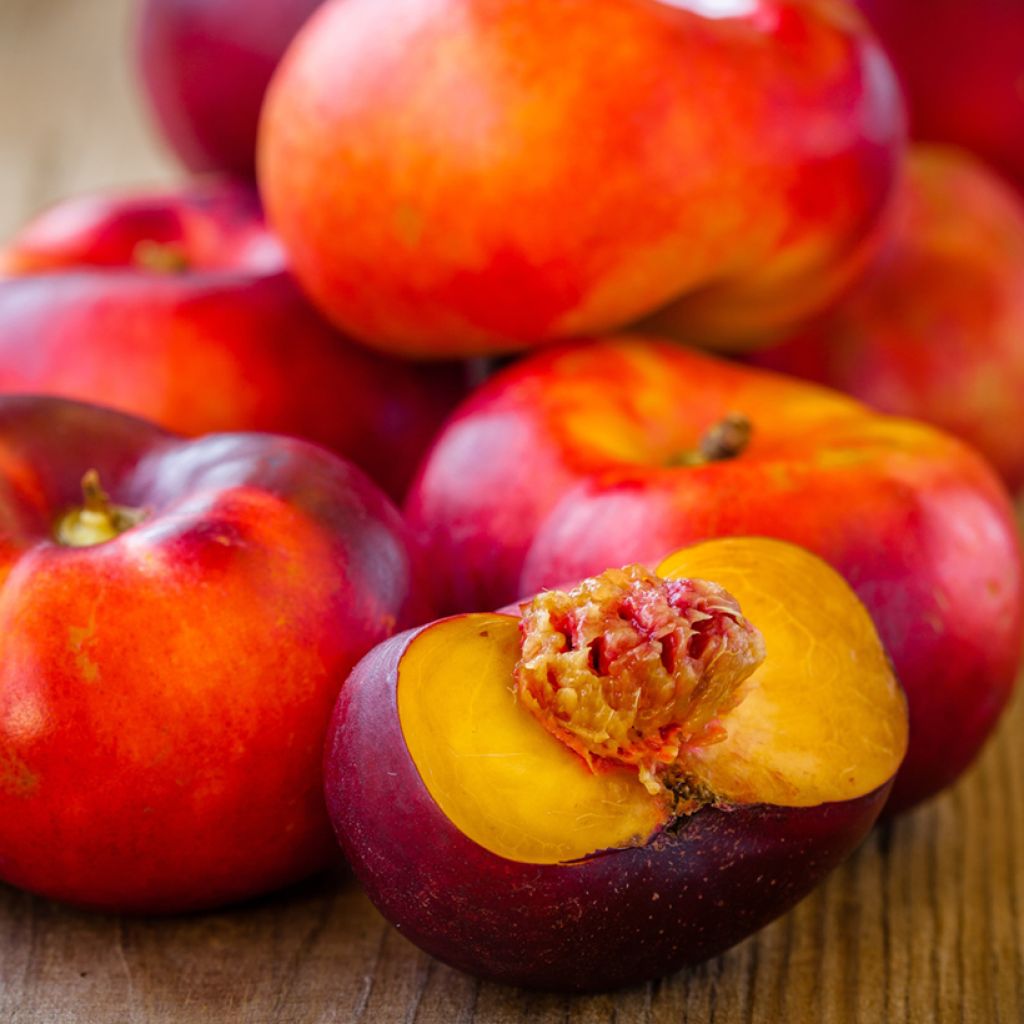

Nectarine Tree - Flat Peach with Yellow Flesh Organic
Nectarine Tree - Flat Peach with Yellow Flesh Organic
Prunus persica var. nucipersica Brugnon plat chair jaune
Nectarine
Acheté en 2022, belle qualité de greffe, et racines fournies. Le nectarinier redémarre au printemps 2023, puis sèche, sans compréhension. J'envoie des photos au SAV, qui me renvoie un nectarinier identique en décembre 2023. J'espère qu'il ne sèchera pas au printemps 2024. Mais en tout cas, excellent SAV.
Julien, 11/12/2023
Why not try an alternative variety in stock?
View all →This plant carries a 6 months recovery warranty
More information
We guarantee the quality of our plants for a full growing cycle, and will replace at our expense any plant that fails to recover under normal climatic and planting conditions.
Oversize package: home delivery by special carrier from €6.90 per order..
Express home delivery from €8.90.
Delivery to Corse prohibited: UE law prohibits the import of this plant from mainland France to Corse as part of the fight against Xylella fastidiosa. Please accept our sincere apologies.
More information

Description
The Organic Yellow Flesh Flat Nectarine is an original variety. Its colourful and flattened fruits are refreshing and low in calories. In late summer, you can enjoy them every day. It produces a medium-sized nectarine, measuring 7 to 9 centimetres (3 to 4 inches) in diameter, weighing 110 to 150 grams, with a round shape and a very distinct flatness at both ends. The skin is fairly thin, smooth, and shiny, with dark red colouration on a yellow-orange background. The yellow flesh is fine and filled with sweet and fragrant juice, surrounding a stone that separates easily from the pulp. After a striking flowering in March, the fruit ripens in August-September. Like the peach, its close relative, the nectarine is susceptible to peach leaf curl and spring frosts, preferring a warm, well-ventilated, sunny, and sheltered location. Slightly less hardy than the peach, it is a small tree with a short lifespan, lasting no more than 15 to 20 years.
The Prunus persica (Common Peach) is a fruit tree belonging to the Rosaceae family, originally from China in the Sichuan and Guizhou regions around 500 BC. It appeared in Europe in the 6th century and experienced significant development in the 19th century. From there, numerous selections aiming to improve the fruit's taste took place. The Nectarine, scientifically known as Prunus persica nucipersa, originated from a natural mutation of the peach that occurred in the 16th century. In France, the difference between nectarines and flat peaches is determined by the adhesion of the stone to the flesh. If the flesh separates easily from the stone, it is a nectarine; otherwise, it is a flat peach.
The Yellow Flesh Flat Nectarine variety forms a small tree with a fairly upright structure and a spreading habit, reaching approximately 3 to 4 metres (10 to 13 feet) in height and 2 to 3 metres (7 to 10 feet) in diameter when fully grown. Its habit is well-suited for low forms (bushes) or trained forms. Its foliage consists of lanceolate leaves measuring 8 to 15 cm (3 to 6in) long and 3 to 4 cm (1 to 2in) wide, with serrated and wavy edges, a vibrant green colour, turning yellow-orange in autumn before falling. The leaves have a slight almond fragrance. In late March, pale pink flowers, measuring 2 to 3 cm (1in) in diameter, appear solitarily, before the leaves on the previous year's branches. They can be destroyed by frost from -2 to -3°C. It is a fairly hardy tree, tolerating temperatures down to -15°C, and can be grown in all temperate regions, with a preference for the southern half of continental Europe. Its spring flowering, which is quite early, can be damaged by late frosts. This necessitates placing the tree, if grown in northern regions, in a particularly sunny and sheltered location. It has a remarkably decorative spring flowering, which is highly attractive to bees and butterflies. A self-fertile variety, not requiring other peach trees nearby for pollination, but the presence of another nectarine tree will improve fertility. To obtain beautiful nectarines, it is possible to remove some fruits as soon as they appear.
This variety, being self-fertile, produces a harvest that can be more or less abundant depending on the year. It begins fruiting quite quickly, around 3 to 5 years, with optimal production reached after 5 to 7 years. The fruits are harvested from mid-August to mid-September, as they ripen. As nectarines are fragile, they are harvested by hand with care. Low in calories, they are rich in antioxidants, beta-carotene, and potassium. Additionally, their high content of vitamins C, E, and B3, along with their richness of dietary fibre, makes nectarines a healthy choice. They are invigorating, energising, and hydrating. Nectarines picked slightly unripe will continue to ripen in the house and can be stored for a week in a cool, dark place.
The delicious fruits can be eaten fresh as soon as they are picked. They are also ideal for making compotes, smoothies, ice creams and sorbets, tarts, clafoutis, pastries, fruit salads or preserves, as accompaniments to savoury dishes with meats (duck, rabbit, chicken, etc.) or fish (salmon, cod, etc.). They are also perfect for making juice or fruit syrups. With its high water content, nectarines are refreshing and thirst-quenching. Being very fleshy, they provide a great feeling of satiety.
Like many fruit trees, nectarine trees prefer rich, deep, and well-drained soils. They do not tolerate excess water, heavy and compacted soils, or limestone soils. They prefer a sunny location, sheltered from drafts and cold winds. A southeast or southwest exposure is ideal. In regions that frequently experience late spring frosts, they can be trained against a south-facing wall. Very popular due to their fruits, nectarine trees find their place in the garden for the enjoyment of both young and old. With a wide range of varieties, it is easy to find the one that best suits your preferences.
Report an error about the product description
Plant habit
Fruit
Flowering
Foliage
Botanical data
Prunus
persica var. nucipersica
Brugnon plat chair jaune
Rosaceae
Nectarine
Cultivar or hybrid
Other Peach and Nectarine trees
Planting and care
The Flat Yellow Flesh Nectarine is planted in full sun, sheltered from drafts and cold winds. A southeast or southwest exposure is ideal. If you don't live in the south of Europe, the nectarine can be trained against a south-facing wall. In regions that frequently experience late spring frosts, it will be more difficult, if not impossible, to fruit a nectarine tree.
It requires ordinary soil in a rich, deep, and well-drained soil. The nectarine tree fears heavy and waterlogged soils, as well as limestone soils.
The planting period depends on the form of the nectarine tree. Thus, a bare-root nectarine tree should be planted from October to March, traditionally for Saint Catherine's Day, excluding periods of frost. A bare-root fruit tree should be planted immediately after purchase, as the roots should not be exposed to sunlight and open air. If you cannot plant it immediately, put it in a temporary location while waiting.
When purchased in a container, the nectarine tree can be planted in autumn, from October to December, again excluding periods of frost or even in spring.
Dig a hole at least 60 cm (24in) deep and 1 metre (3 feet) wide, at least one week before planting. Remove all stones and weeds. Place the container in a basin of water to moisten the root ball through capillary action. Add two handfuls of crushed horn at the bottom of the hole. Mix the extracted soil with well-rotted compost, well-decomposed manure, or potting soil. Fill the hole halfway with the extracted soil. Plant a stake at least 50 cm (20in) deep. Place the nectarine tree in the hole. Fill with the remaining soil. Gently firm the soil around the nectarine tree and secure it to the stake. Form a basin and water abundantly.
Proceed in the same way if you plant a bare-root nectarine tree. But don't forget to prune and dress the bare roots before planting.
Planting period
Intended location
Care
-
, onOrder confirmed
Reply from on Promesse de fleurs
Mediterranean fruit trees
Haven't found what you were looking for?
Hardiness is the lowest winter temperature a plant can endure without suffering serious damage or even dying. However, hardiness is affected by location (a sheltered area, such as a patio), protection (winter cover) and soil type (hardiness is improved by well-drained soil).

Photo Sharing Terms & Conditions
In order to encourage gardeners to interact and share their experiences, Promesse de fleurs offers various media enabling content to be uploaded onto its Site - in particular via the ‘Photo sharing’ module.
The User agrees to refrain from:
- Posting any content that is illegal, prejudicial, insulting, racist, inciteful to hatred, revisionist, contrary to public decency, that infringes on privacy or on the privacy rights of third parties, in particular the publicity rights of persons and goods, intellectual property rights, or the right to privacy.
- Submitting content on behalf of a third party;
- Impersonate the identity of a third party and/or publish any personal information about a third party;
In general, the User undertakes to refrain from any unethical behaviour.
All Content (in particular text, comments, files, images, photos, videos, creative works, etc.), which may be subject to property or intellectual property rights, image or other private rights, shall remain the property of the User, subject to the limited rights granted by the terms of the licence granted by Promesse de fleurs as stated below. Users are at liberty to publish or not to publish such Content on the Site, notably via the ‘Photo Sharing’ facility, and accept that this Content shall be made public and freely accessible, notably on the Internet.
Users further acknowledge, undertake to have ,and guarantee that they hold all necessary rights and permissions to publish such material on the Site, in particular with regard to the legislation in force pertaining to any privacy, property, intellectual property, image, or contractual rights, or rights of any other nature. By publishing such Content on the Site, Users acknowledge accepting full liability as publishers of the Content within the meaning of the law, and grant Promesse de fleurs, free of charge, an inclusive, worldwide licence for the said Content for the entire duration of its publication, including all reproduction, representation, up/downloading, displaying, performing, transmission, and storage rights.
Users also grant permission for their name to be linked to the Content and accept that this link may not always be made available.
By engaging in posting material, Users consent to their Content becoming automatically accessible on the Internet, in particular on other sites and/or blogs and/or web pages of the Promesse de fleurs site, including in particular social pages and the Promesse de fleurs catalogue.
Users may secure the removal of entrusted content free of charge by issuing a simple request via our contact form.
The flowering period indicated on our website applies to countries and regions located in USDA zone 8 (France, the United Kingdom, Ireland, the Netherlands, etc.)
It will vary according to where you live:
- In zones 9 to 10 (Italy, Spain, Greece, etc.), flowering will occur about 2 to 4 weeks earlier.
- In zones 6 to 7 (Germany, Poland, Slovenia, and lower mountainous regions), flowering will be delayed by 2 to 3 weeks.
- In zone 5 (Central Europe, Scandinavia), blooming will be delayed by 3 to 5 weeks.
In temperate climates, pruning of spring-flowering shrubs (forsythia, spireas, etc.) should be done just after flowering.
Pruning of summer-flowering shrubs (Indian Lilac, Perovskia, etc.) can be done in winter or spring.
In cold regions as well as with frost-sensitive plants, avoid pruning too early when severe frosts may still occur.
The planting period indicated on our website applies to countries and regions located in USDA zone 8 (France, United Kingdom, Ireland, Netherlands).
It will vary according to where you live:
- In Mediterranean zones (Marseille, Madrid, Milan, etc.), autumn and winter are the best planting periods.
- In continental zones (Strasbourg, Munich, Vienna, etc.), delay planting by 2 to 3 weeks in spring and bring it forward by 2 to 4 weeks in autumn.
- In mountainous regions (the Alps, Pyrenees, Carpathians, etc.), it is best to plant in late spring (May-June) or late summer (August-September).
The harvesting period indicated on our website applies to countries and regions in USDA zone 8 (France, England, Ireland, the Netherlands).
In colder areas (Scandinavia, Poland, Austria...) fruit and vegetable harvests are likely to be delayed by 3-4 weeks.
In warmer areas (Italy, Spain, Greece, etc.), harvesting will probably take place earlier, depending on weather conditions.
The sowing periods indicated on our website apply to countries and regions within USDA Zone 8 (France, UK, Ireland, Netherlands).
In colder areas (Scandinavia, Poland, Austria...), delay any outdoor sowing by 3-4 weeks, or sow under glass.
In warmer climes (Italy, Spain, Greece, etc.), bring outdoor sowing forward by a few weeks.

































